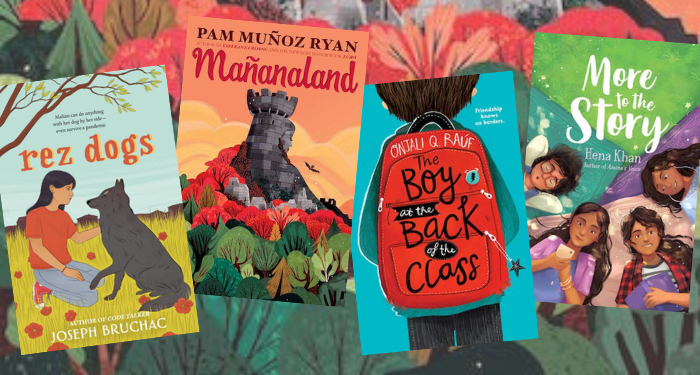
Books to Boost Young Readers’ Cultural Literacy
As a parent, I love books that create space for conversations with my kiddo. Sure, we talk a lot about cats (her favorite thing ever) and food (a close second), but there are other things I want to discuss with her. For me, books are a great way to jumpstart conversations — especially when it comes to cultural literacy.
Cultural literacy is important, and books can play a big role in helping young readers develop it. While exposure to and interaction with people from a wide array of cultural backgrounds is certainly also crucial for young people’s development, sometimes sitting down with a good book can provide an engaging point of entry.
The books I’m sharing with you today are all aimed at young readers. That means they’re all accessible to readers ages 8–12, although of course the reading level varies by the book (as it does by the reader). One thing I love about all of these books is the way they take social situations that may be hard for younger kids to understand and make them accessible.
Whether they’re exploring the dynamics of growing up trans, thinking through what it means to be a kid during the COVID pandemic, or grappling with political conversations about refugees, all of these books are fantastic conversation starters. If you, like me, are interested in using books to help talk to your young reader about the world, it might be a fun experiment to read some of these books to or with them. (But that’s just an idea, so take it with a grain of salt!)
I’ve divided the list into two parts: books that focus on current issues and books that center marginalized perspectives. The books in the first section all revolve around timely topics that feature prominently on the national or international stage in this moment of time. Alternately, the books in the second section are a little less defined by the specific moment and more about spending time with various world views that are underrepresented (or not represented at all) in the mainstream.
Books That Focus On Current Issues
The books in this section all revolve around timely topics that feature prominently on the national or international stage in this moment of time.

Mañanaland by Pam Muñoz Ryan
Mañanaland is set in the fictional land of Santa Maria. Still, is it fantasy or is it about larger issues like immigration and refugees? Both, of course. Maximiliano “Max” Córdoba can’t remember his mother and Papá won’t talk about her. So his listens to his Buelo’s stories, especially the legend about the mythical gatekeeper who leads people into tomorrow. People who, like Max’s mother, are in danger and need to travel to another land to find safety. Divided into three parts (Yesterday, Today, and Tomorrow), Ryan’s enchanting novel tells a beautiful story even as it contends with real world struggles related to immigration and refugees.

Zenobia July by Lisa Bunker
If author Lisa Bunker sounds familiar to you, it might be because she is one of the first two trans politicians simultaneously elected to the New Hampshire House of Representatives. Zenobia July follows the eponymous protagonist as she lives openly as a girl for the first time. Having recently moved from Arizona to Maine to live with her aunts, she brings with her a host of coding and hacking skills honed while she hid behind her computer in her previous community. Now, Zenobia puts her tech skills to good use when someone anonymously posts hate speech on her school website. This novel is as much about embracing one’s true gender as it is about what it means to really be “home.”
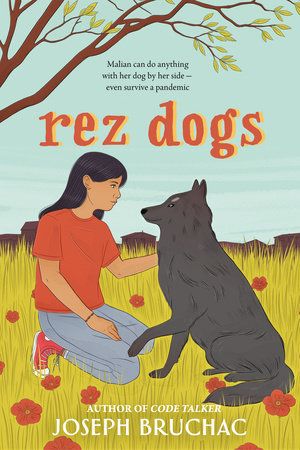
Rez Dogs by Joseph Bruchac
Written as a longform narrative poem inspired by oral storytelling traditions, this novel by award-winning children’s book author Joseph Bruchac is, on the surface, about life during the COVID-19 pandemic. It’s also about Native American traditions, culture, and community. It begins with Malian spending time with her grandparents on a Wabanaki reservation. Then COVID hits and everything shuts down. Of course, Malsum (a dog from the rez, hence the title’s name) shows up to protect the family. Bruchac’s book is a quick and compelling read about life during COVID that also delves into Native American history and tradition, extending the past into the present through its exploration of how Malian and Maslum care for others.
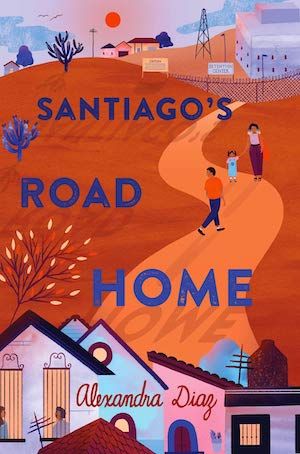
Santiago’s Road Home by Alexandra Diaz
Santiago is 12 years old and caught between a rock and a hard place. He doesn’t want to go back to the abusive situation at his abuelo’s house. Instead, he decides to cross the border with a kind stranger and her daughter. So begins an arduous journey that includes surviving the elements, dealing with coyotes, and enduring a detention facility for child immigrants. The novel doesn’t attempt to sugar coat the harsh realities at the U.S.-Mexico border. It’s a powerful read with fully developed characters — one that can help young readers begin to understand contemporary immigration policies.
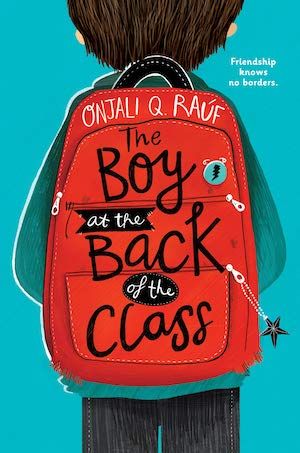
The Boy at the Back of the Class by Onjali Q. Raúf
This book uses the metaphor of bullying (as in, schoolyard bullies) to help young readers understand what it means to be a refugee. While Raúf’s novel features Ahmet, a young Syrian refugee, its investigation of refugees is broadly applicable. The story is told from a young British girl’s perspective as she and her friends make friends with the new boy in their class. You guessed it: he’s a refugee. The story is full of surprising mishaps and well-intentioned antics. It’s told with humor and tenderness, and even has occasional black and white illustrations.
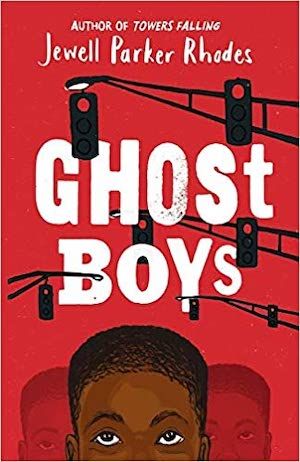
Ghost Boys by Jewell Parker Rhodes
This novel is so powerful. If you’re looking for a fictional point of entry into talking with your young reader (whatever their racial identity) about police violence against African Americans (especially boys), Ghost Boys is it. The story is narrated by Jerome, a 12-year-old Black boy who was shot and killed by the police. As Jerome watches his family and community in the aftermath of his murder, he also meets the ghost of Emmett Till, whose 1955 murder and subsequent sham trial is often cited as the spark that ignited the Civil Rights Movement. Jerome also becomes familiar with the daughter of the man who killed him. Rhodes’s novel teaches some history, grapples with racism, and looks head-on at the real-life problem of violence against African Americans.
Books That Center Marginalized Perspectives
The books in this section are not necessarily defined by the specific moment (like some of the books above). Instead, they present opportunities to spend time with various world views that are underrepresented (or not represented at all) in the mainstream.
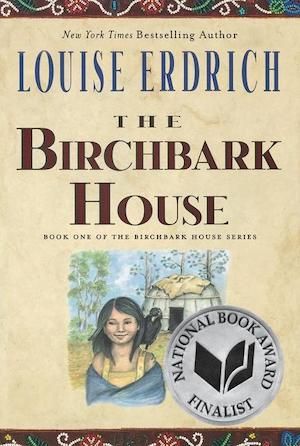
The Birchbark House by Louise Erdrich
Originally published just over two decades ago, The Birchbark House is the first book in a five-book series following one Ojibwe family for a century. Given that Erdrich is a Pulitzer Prize–winning writer (among other accolades), it’s no surprise that this book was recently republished due to its continued popularity with young readers. Whether your young reader enjoys historical fiction, wants to learn a little about traditional Ojibwe culture, or just likes a good story, The Birchbark House is a great pick. If you want to discuss the book together, it also provides lots of opportunities to discuss U.S. history.
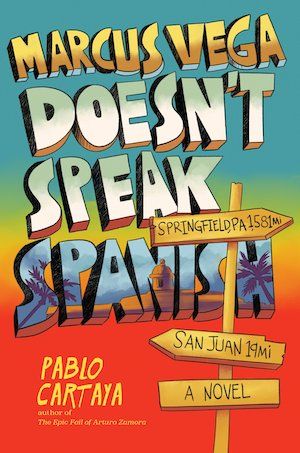
Marcus Vega Doesn’t Speak Spanish by Pablo Cartaya
Marcus Vega doesn’t fit in. He’s only an 8th grader, yet he’s the size of a grown-up. When he gets into a fight at school, his mom decides to send both him and his younger brother to Puerto Rico. It’s a classic literary culture-shift: the boys are expected to stay with family for a whole week despite not knowing (or even having met) their relatives. While he’s there, Marcus begins searching for his father. It’s a fun book with humor and unexpected adventures. As Marcus’s story unfolds, Cartaya confronts stereotypes and assumptions regarding Latinx people and culture. As you might infer from the title, it’s a quirky read that may appeal to reluctant and avid readers alike.
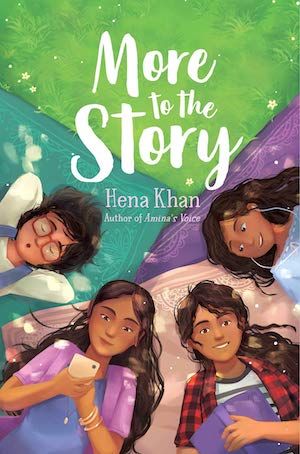
More to the Story by Hena Khan
More to the Story is a contemporary tale inspired by Louisa May Alcott’s Little Women. Pakistani American protagonist Jameela Mirza wants to follow in her grandfather’s footsteps and become a journalist. But her grand ideas don’t mesh with the editor of the school newspaper’s vision, so she’s stuck writing about more mundane things (like the new kid at school). Suddenly, Jameela’s whole life — including her journalistic goal — is upended when her dad leaves for a job overseas and her younger sister falls ill. The book’s preoccupations with family and what matters most intertwine with larger ideas of Americanness.
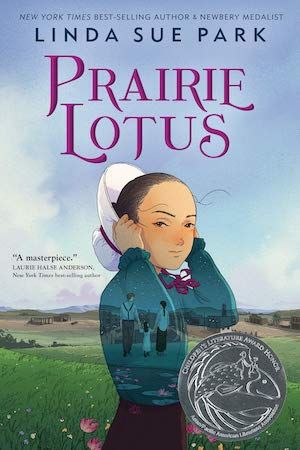
Prairie Lotus by Linda Sue Park
When Linda Sue Park was growing up, she loved the Little House on the Prairie books. However, as she grew up she realized that the reality represented in those books would never have been available to someone like her — a mixed-race Asian American girl — during that time. Prairie Lotus is Park’s literary offering to herself. After her mother’s death, Hanna and her father relocate to a new town. Hanna has to contend with her classmates’ racism and ignorance as they try to make a home for themselves. Hanna’s love for fashion design, her generous spirit, and her remarkable tenacity make this a powerful read. Park deftly weaves histories of anti-Asian hate and racism into the narrative in a way that feels organic to the story, providing fruitful inroads for possible conversations.
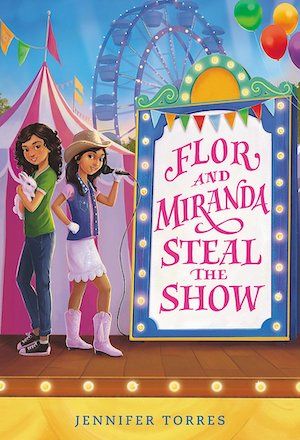
Flor and Miranda Steal the Show by Jennifer Torres
This funny novel alternates between Flor’s and Miranda’s narration. Both girls are 11 years old and belong to families who work in a traveling carnival. They become friends despite the tension created by the carnival owner’s potential decision to eliminate the petting zoo Flor’s family runs in favor of featuring Miranda’s family’s band. The whole story unfolds within a single day, which makes for a fast-paced and lively story. The carnival setting only adds to this with its festival flavor. It’s a sweet story about friendship that revolves around two young Latinas even as it doesn’t focus explicitly on race or culture. If you like Torres’s writing, she has other books that read similarly.
Suggestions for Further Reading
This post on How to Pick Children’s Books About Gender has some great tips on how and why to select good books about gender. Relatedly, Report: 2019 Diversity in Children’s and YA Literature goes over some of the statistics regarding BIPOC writers, illustrators, and characters in literature for young readers that might inform how you select books that feature BIPOC characters or center on issues related to race. The two posts pair nicely to help the bigger picture around literary representation and diversity come into focus.
















